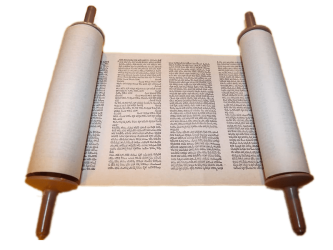The Joy of Torah (Simchat Torah)
22nd Day or 23rd Day of the 7th Month
Overview
The Joy of Torah (Simchat Torah) marks the conclusion of the current year’s reading of the Parashat HaShuvua (Torah Portions) and the start of the next cycle of reading.
Simchat Torah occurs on the 22nd day of the 7th month (the final day of the Feast of Tabernacles, or “Sukkot”) inside of Israel, and on the 23rd day of the 7th month outside of Israel.
While Simchat Torah is not a mo’edim (appointed time) in and of itself, it is a traditional Jewish holy day, and it takes place during the Feast of Tabernacles, which is a mo’edim according to Torah.

Joy of Torah in the Torah
Leviticus 23:33 And YAHWEH spoke to Moses, saying,
Leviticus 23:34 Speak to the sons of Israel, saying, In the fifteenth day of this seventh month shall be a Feast of Booths, seven days to YAHWEH.
Leviticus 23:35 On the first day shall be a holy gathering; you shall do no laborious work.
Leviticus 23:36 Seven days you shall bring a fire offering to YAHWEH; on the eighth day you shall have a holy gathering; and you shall bring the fire offering to YAHWEH; it is a solemn assembly; you shall do no laborious work of service.
Leviticus 23:37 These are the set feasts of YAHWEH which you shall proclaim, holy gatherings, to bring a fire offering to YAHWEH, a burnt offering, and a food offering, a sacrifice, and drink offerings, the thing of a day on its own day;
Leviticus 23:38 besides the Sabbaths of YAHWEH, and besides your gifts, and besides all your vows, and besides all your freewill offerings which you shall give to YAHWEH.
Leviticus 23:39 Also, in the fifteenth day of the seventh month, when you gather the increase of the land, you shall keep the feast of YAHWEH seven days; on the first day a Holy Day Sabbath, and on the eighth day a Holy Day Sabbath.
Jewish Traditions
NOTE: Some of the Jewish traditions associated with The Joy of Torah are steeped in Kabbalah beliefs. More information on the Kabbalah aspects of The Joy of Torah can be found here at Chabad.org.
The 2 Days of the Joy of Torah (Simchat Torah)
In Israel, the Jewish people celebrate the Joy of Torah (Simchat Torah) on the 8th day of the Feast of Tabernacles (Sukkot), the 22nd day of the 7th month. This 8th day is called “Shemini Atzeret”.
Outside of Israel, Simchat Torah is a 2-day event that starts on Shemini Atzeret (on the 22nd day of the 7th month). However, the traditions of Simchat Torah are celebrated on the 23rd day of the 7th month.
Not Really a Mo’edim
In Israel, since Simchat Torah falls on the 8th day of Sukkot, a mo’edim (a Torah appointed holy day), all the rules of Jewish law (and the Torah) that apply to the 8th day of Sukkot also apply to Simchat Torah.
Outside Israel, even though Simchat Torah falls on the day following the 8th day of Sukkot, it is still treated as a mo’edim (though it is not called a mo’edim in the Torah) and is considered a Sabbath day of rest according to Jewish law.
Evening and Morning Services
On Simchat Torah, a few modifications are made to the regular evening and morning synagogue services.
For the Torah reading, the Torah scrolls are brought out and the final reading of the year (Parshat V’Zot HaBerachah – Deuteronomy 33:1–34:12) is read, followed by the first reading of the new year’s cycle (Parshat Bereishit – Genesis 1:1–2:3) and a selection from the book of Numbers (Parshat Bamidbar Numbers 29:35-30:1).
The Torah Portions are divided up into 8 sections (“aliyot”) so that each man present (as well as all the children) has an opportunity to read a selection from the Torah Portion. Being selected to read from the Torah is called sharing an “aliyah”. If there are more than 8 men present, then the first 5 aliyot from Parshat V’Zot HaBerachah (Deuteronomy) are repeated over and over until everyone has had a chance to read. The children are given their chance to read by accompanying the last man selected to read from Deuteronomy.
The man selected to give the final reading from Deuteronomy is known as the “Chatan Torah” (Torah Groom). And likewise, the man selected to give the first reading from Genesis is known as the “Chatan Bereshit” (Genesis Groom. Since both of these positions are highly sought out, they are usually given to men who have pledged to donate a substantial amount of money to a charity.
After this, the Torah scrolls are paraded around the synagogue for a minimum of 7 circuits, although generally the parade and celebration lasts longer than just 7 circuits.
At the conclusion of the evening services, the leader of the synagogue will usually proclaim, “VeYaakov halach ledarko” (And Jacob went on his way!).
More details on the Jewish traditions surrounding The Joy of Torah can be found here at Chabad.org.
